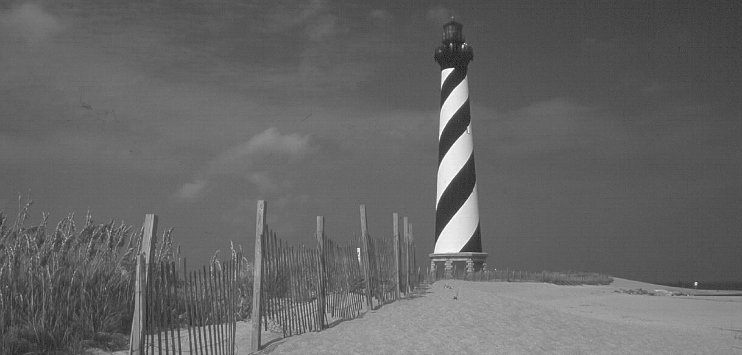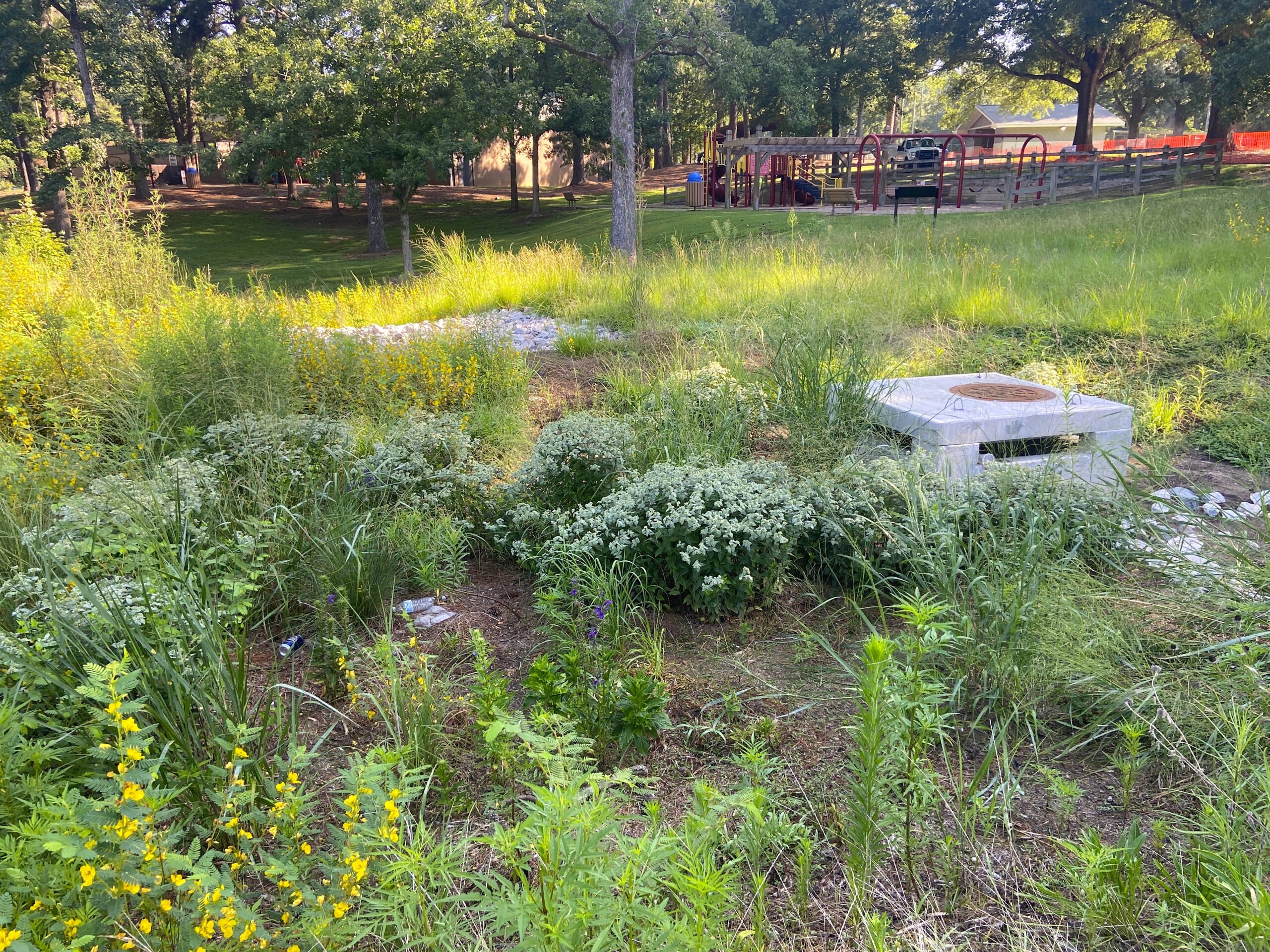Jennie Fulcher Sharp recalls her father, Charles Fulcher, wanting a good job that could allow him to spend time with his family — a family that would eventually include a dozen children.
He found that balance as an assistant lightkeeper for the Cape Hatteras Lighthouse, where he served from shortly before Sharp’s birth in 1906 to 1920. “Family is the most important thing,” explains Sharp, now 95 years old.
Family is still a hallmark for the Fulcher clan, as they gather 60-strong for a homecoming of descendants of the Hatteras lightkeepers. They are in the company of other well-known island families — Midgett, Jennette and Austin to name a few.
All together, nearly 2,000 people come to honor fathers and grandfathers, great-uncles and beyond. The event, organized by the Outer Banks Lighthouse Society, gives new perspective to family stories. Many folks arrive from around the country to find a link to a national treasure.
“This should have happened before,” says Sharp’s younger sister, Annie Fulcher Pellegrini, 81, who was about three months old in 1920 when the family moved from the keepers’ quarters to nearby Frisco. She now lives in Winston-Salem, but her island cottage is still a family haven, especially in the summer months.
A third sister, Nevada Fulcher Palmer, better known as Day, 79, came from her home in Arlington, Va., for the event. “I was the only one not born in the keepers’ quarters,” she says, differentiating herself from her sisters. She, too, returns each summer to a home in Frisco.
For Sharp, the reunion provides her first venture inside the keepers’ quarters in eight decades. “There’s the kitchen,” she says with excitement as she eagerly pulls from the grasp of relatives stationed at her sides, while others trail behind, recording the event on video and film.
“We had outdoor toilets,” she explains in a more serious tone as she glances out the windows.
“For the last time, I want to go into every room,” she says, even though that means walking up narrow stairs to the bedroom area. “My best days were out here,” adds Sharp, who now lives in Virginia.
Family stories recall the responsibilities Jennie had as the oldest daughter, helping to care for her siblings and teaching them to cook, clean and crochet. But for a few moments, her strongest memories are of child’s play. “We played on the sandhills. That was our recreation,” says Sharp, acknowledging that the lighthouse had been moved to escape erosion.
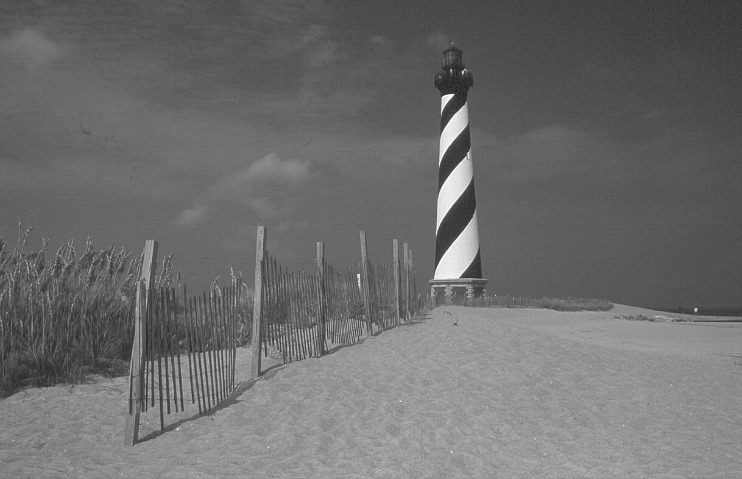
The children also helped with the horses and cattle — animals that looked so small from the top of the lighthouse. “It’s a long way up there,” she says, looking up at the famed tower. “I feel sad I can’t climb to the top.”
Her granddaughter, Teresa Sharp Rountree, also has fond memories of summers spent on the island and visiting the lighthouse. “You take it for granted as a child,” Rountree says.
Rountree’s daughter, Tara, took a day off school to come to the homecoming ceremonies. “This is a better way to learn history,” Tara explains.
A Strong Foundation
A circle of stones from the 1870 foundation marks the original site of the second and best-known Hatteras light. The stones are inscribed with names of each known Hatteras keeper and his term of service, from 1803 to 1939.
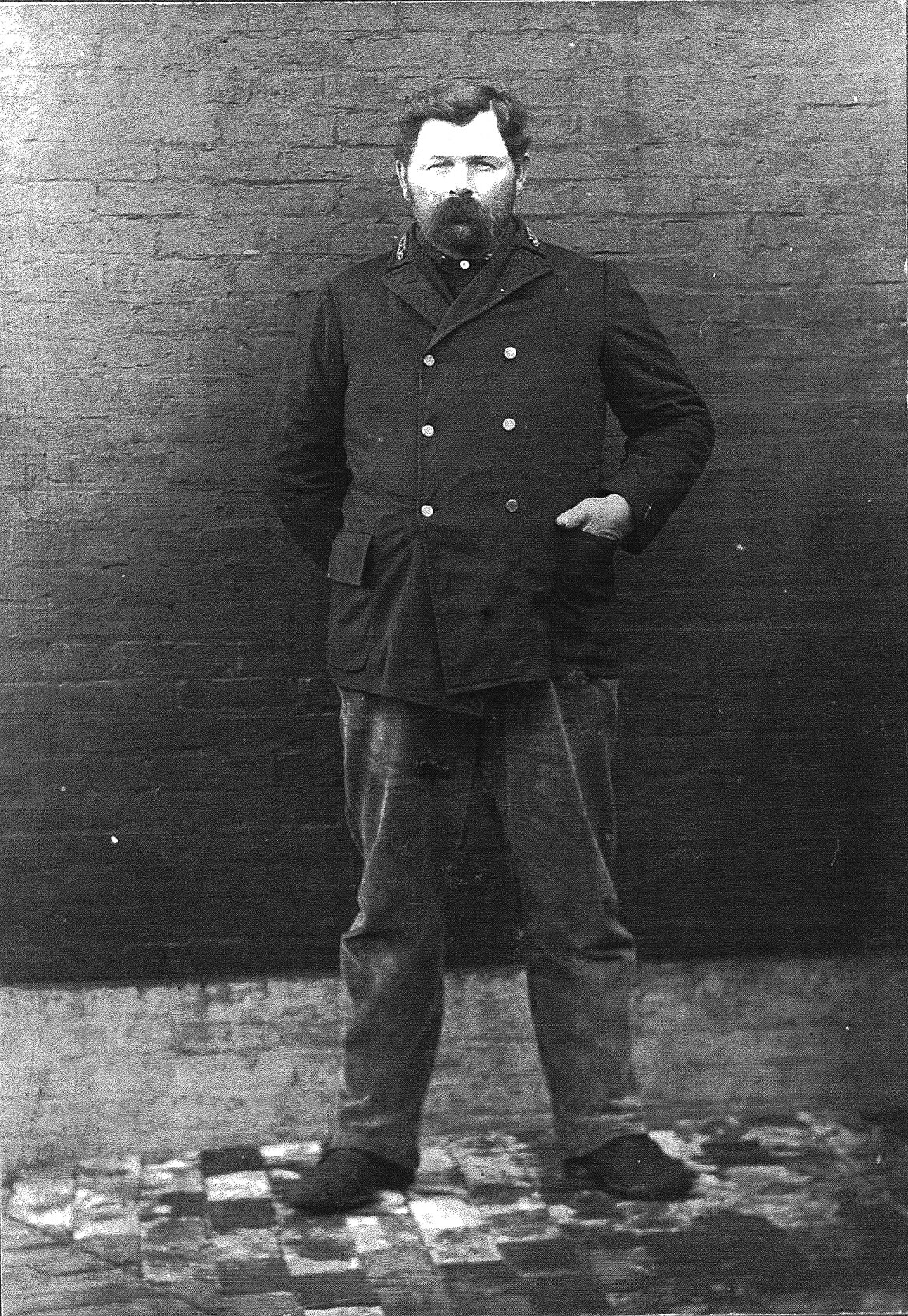
“Like that granite foundation, the keepers formed the foundation of American character,” says Francis Pelitier, former superintendent of the Cape Hatteras National Seashore, part of the National Park Service.
The idea for the stone memorial — marking both a place and a heritage — came during an otherwise mundane planning session, recalls Cheryl Shelton-Roberts, one of the homecoming organizers. The group then had to receive park service permission and pay for the engraving.
“All the right timing and energy, talent and goodwill came together,” she says, noting the cooperation of the local planners, including Lynn Jennette, and the engraver, A.C. Joyner. “There is something magical about this place,” Shelton-Roberts adds.
Four great-grandchildren of Unaka Jennette, the last Hatteras lightkeeper, have the honor of unveiling the memorial. A native of Buxton, Jennette spent 20 years tending the Hatteras light, starting in 1919 after already having spent 15 years on light vessels. He moved from the main Hatteras post to a skeleton tower in Buxton woods in 1936, serving there until 1939.
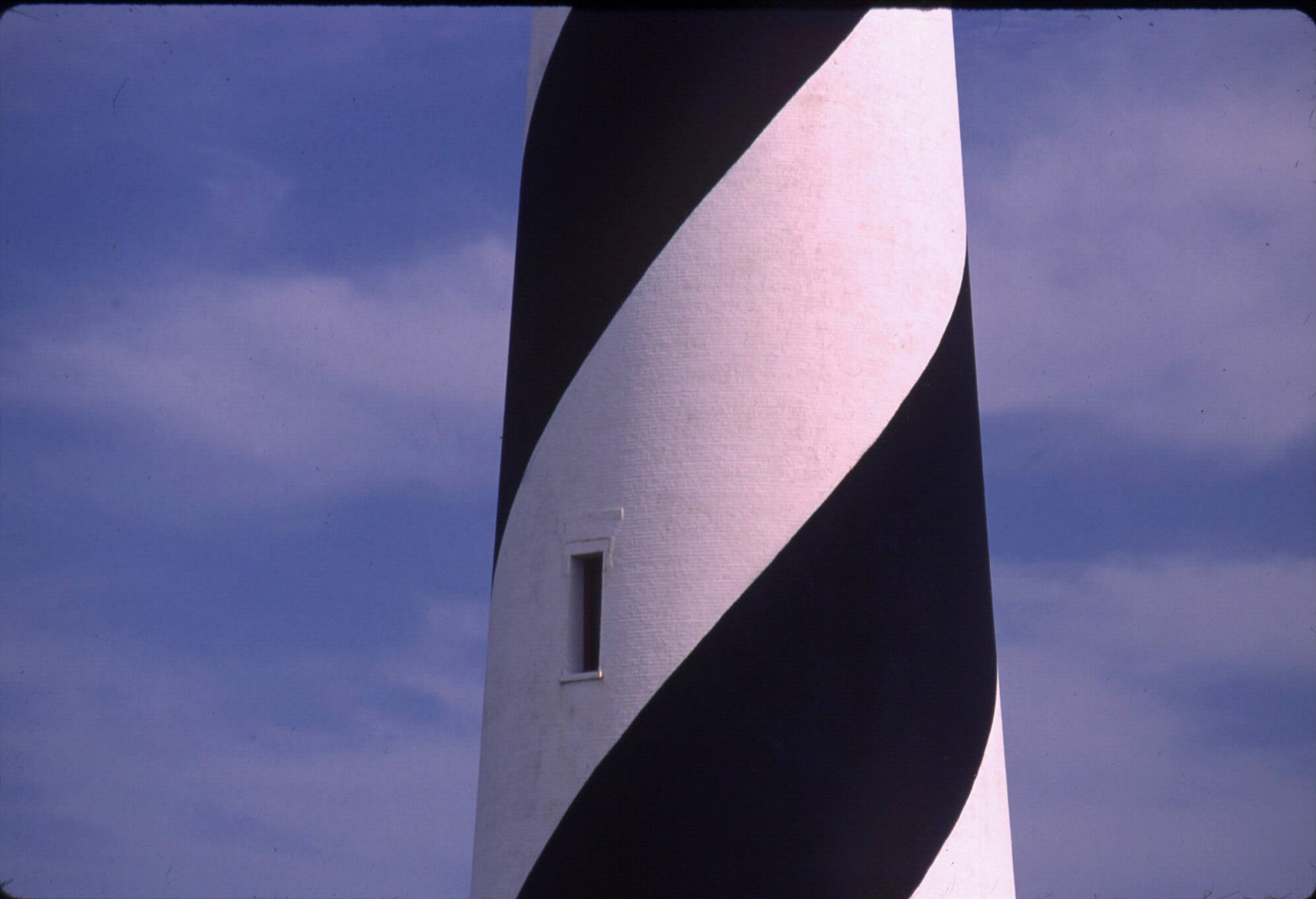
The official records include this job description by Jennette:
“The principal keeper is in responsible charge of station to see that lens and lantern are kept properly clean and polished and clock work clean and running on time, and that buildings and grounds are kept clean and orderly, well painted and in repair within capacity of keepers. He is also responsible for keeping of station records and for all property and supplies.”
Eight Jennett or Jennette family members were keepers. In fact, Christian Jennett, widow of Joseph Jennett, sold to the government the original four acres upon which a 95-foot-tall sandstone tower was built in 1802 and lighted in 1803. That tower was replaced with the candy-striped tower.
In more recent years, Unaka Benjamin Jennette’s son Rany, who was born in the principal keeper’s quarters, served as a park ranger at the site. “He told visitors wonderful anecdotes about growing up at the light station. Just across the compound, Lynn stood at the door of the lighthouse, watching Rany deliver his program to crowds of curious people. Their love for Cape Hatteras and their determination to share his family’s heritage with all who visited this great tower became a reason for them to spend the rest of their lives together,” explains Shelton-Roberts.
(Although he had suffered a stroke, Rany Jennette attended the reunion and joined other descendants for a family portrait. He died in October.)
During his park tenure, Rany Jennette told the story of the August 1933 hurricane that marked the end of an era when keepers and their families resided at the lighthouse property. In official correspondence regarding that storm, Unaka Jennette included these descriptions of the damage:
“This is by far the highest sea tide recorded since I have been at Cape Hatteras. Two storehouses and garages were washed down. Three toilets washed down. Floor busted up in one room of 2nd assistant quarters. Screening on keepers dwelling destroyed. Furniture in keepers dwelling is badly damaged. Sand banked around oil house, up to the oil tank. The entire reservation is completely submerged, and I have been forced to move my family away from the station.”
Just three weeks later, another storm hit the island, which had not yet recovered from the initial damage.
Lighting the Night
Most times were not as decisive. Assistant keeper Julian H. Austin, who began his duties at Hatteras in 1928, wrote this description of his duties:

His watch was every third night, “beginning one hour before sunset and lasting continuously until one or one-and-one-half after sunrise. Work in the tower consisting of carrying up oil for lamp, dusting off lens, lighting up lamp and adjusting same in afternoon. In morning, after extinguishing light, I get up curtains and cover the lens, fill reservoir with oil, wind up lens machinery, and wipe up watch tower. The watch averaging fourteen hours.”
Austin served only a year at Hatteras, and moved along the coast at the orders of the lighthouse service. His daughters, Verna Austin Wall, who now lives in Camden, and Marilyn Austin Meads, who now lives in Elizabeth City, not only attended the ceremony, but worked with the planners.
Meads was born less than two weeks after her father transferred from the Hatteras post. “He left April the first, and I was born on the 14th in Frisco,” she explains.
Both sisters remember well the days he spent as a keeper at Bodie Island, from 1934 to 1940, before he transferred to Maryland. Despite the moves and the intervening decades, Meads says that some elementary school classmates from Manteo remain her closest friends.
And, the homecoming program extended that circle. “It brought a kinship to all those people,” says Meads. “They did a marvelous job.”
Trees of Many Branches
Throughout the weekend, reunion participants compare family trees in a nearby community center. The linkages are the work of genealogist Sandra MacLean Clunies, who donated her database to the Outer Banks Lighthouse Society.
Clunies spent countless hours working through “long-forgotten dusty old public records” — including 13,000 cubic feet of lighthouse records that were neither indexed nor microfilmed. Some records were lost over the years. Others may never have been turned in. “They may be in barns or attics,” Clunies suggests.

When searching the records of the U.S. Lighthouse Service, she found some surnames again and again, although with some spelling variations. Names including Farrow, O’Neal, Quidley, Simpson and Williams.
To find some families, she followed up with Civil War pension files. For others, World War I draft registration cards listed occupation and next of kin. A “high-tech grandma,” Clunies also jumped on the Internet. Before long, her list grew from 1,000 to more than 10,000 names.
“This is a study of family relations: Their history, their triumphs, their tragedies, and their realities,” Clunies says. “This is a picture of the past to share with their children and grandchildren.”
During an e-mail exchange, Clunies found a West Coast woman who had saved a family record book bought at a North Carolina flea market 20 years ago. She sent the book to Clunies to present to keeper James W. Gillikin’s granddaughter Ruth, who had come from Huntsville, Pa.
“Genealogy is more than dusty records and gravestones — it is connecting family with family,” Clunies says.
Those connections take narrative form in the book Hatteras Keepers Oral and Family Histories, edited by Shelton-Roberts. Along with her husband, Bruce Roberts, she has spent years gathering family histories. The book includes her interviews as well as essays written by family members and Clunies.
Shelton-Roberts also cites the help of Lynn Jennette. “In helping to coordinate the largest gathering ever of keepers’ descendants and helping me gather information for the oral histories book, Lynn has played a significant role in creating a legacy that will provide information to people about Cape Hatteras that otherwise would not have existed,” she says. “Future generations will learn a great deal about the human side of this light station because of the information that Rany and Lynn have helped to preserve.”
The timing of the reunion in 2001 was critical because several direct descendants were able to participate in the oral history project and the event itself. Their stories show that the families took barrier-island life in stride. “They were happy families. It was a wonderful place to grow up. I don’t recall anyone being lonely,” Shelton-Roberts says.
Cousins Near and Far
It’s only her second trip to Hatteras, but Christine Rollinson Dickson feels right at home. “One woman came up and hugged me and said she was the granddaughter of my grandmother’s brother,” says Dickson, who is related to two keeper families — Fulchers and Rollinsons.
“They did something exciting by bringing together all of these descendants to get to meet their cousins,” adds the Ohio resident, whose father had spent summers at the lighthouse. Her own children, who came from Ohio and Montana for the event, describe the family connections as “mind-boggling.”
Dickson’s first visit to Hatteras Island was last year when she came to celebrate her own 53rd wedding anniversary. She has made up for lost time, having compiled notebooks with stories, pictures and family history. She even has a copy of a 1940 Saturday Evening Post story on the lighthouse.

Much of the family genealogy came from a second cousin she met a few years ago. “She’s been doing it for 20 years,” Dickson explains.
Ruth Fulcher Rickert has a first cousin who still lives on Hatteras. “I get back more often,” she says while sharing pictures and stories of her great-grandfather, Benjamin T. Fulcher, whom she profiled for Hatteras Keepers.
He had served 15 years as an assistant keeper, from 1845 to 1860, during which the double keepers’ quarters was added for assistants and their families. He was promoted to principal keeper in October 1860, not long before the start of the Civil War. By 1862, Confederate troops removed the Fresnel lens and darkened the light.
“Most people on the Outer Banks did not own slaves and were federal sympathizers during the Civil War,” Rickert writes. “With the coming of the war, federal soldiers occupied the island after Fort Hatteras fell. Foraging soldiers soon depleted food supplies on the island, and residents were forced to go across to the mainland to live in order to keep from starving to death,” she adds.
Family records and Clunies’ research reveal that Fulcher had two direct descendants as keepers — including grandson Randolph Fulcher and great-grandson Unaka B. Jennette. Eight of his female descendants married keepers. “Hundreds of people living today, with many different surnames, can claim ancestry from many of the early keepers,” Hatteras Keepers explains.
Hatteras History Thrives
The reunion is not just a celebration of the keepers, but of island life in an earlier time. Longtime island resident Ephraim O’Neal tells visitors of the time before ferry service. “I rode the mail boat to Manteo — and had to spend the night sometimes,” he says.
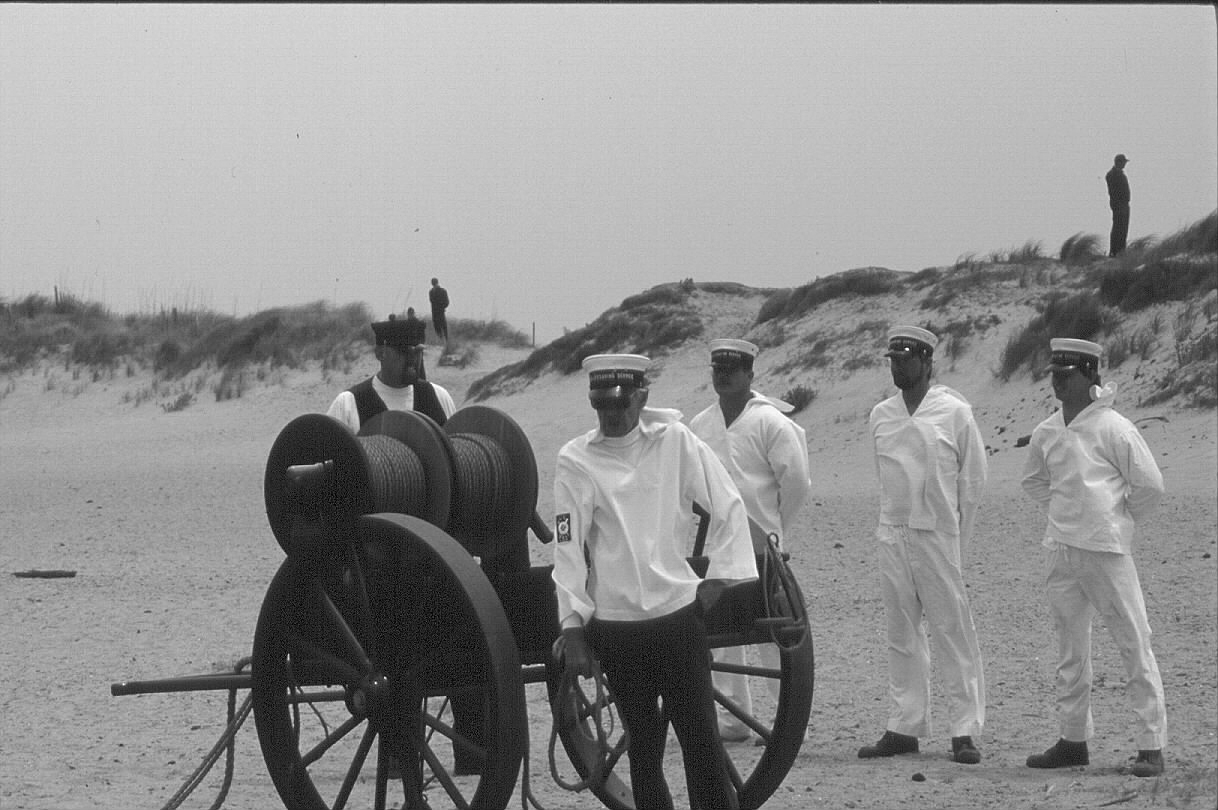
Others recount the connection between the lighthouse service and lifesaving stations, including the rescue of 33 crew members from a German steamer, the Brewster, in 1909. Many families had members in both critical services, thus providing steady federal paychecks in the fishing villages.
From secrets of the island dance halls to memories of well-loved health-care providers, the stories flow from one into another.
Neither the visitors nor the island residents will soon forget the gathering. Brian Edwards of the Outer Banks History Center says the event has drawn younger generations into local historical and genealogical groups as they saw the national value given to their own family histories.
“People tend to look at the tower and think, ‘That’s it.’ But it is much more,” says Edwards, whose wife is the great-great-great-granddaughter of keeper Ephraim Meekins, who spent 40 years with the lighthouse service, including serving as principal keeper at Hatteras from 1900 to 1906.
“It was a way of life,” Edwards says. “The people were very much a part of the community.”
And the lighthouse service was also on the cutting-edge of technology at the time, often drawing great crowds for its exhibits at World’s Fairs, adds Bruce Roberts.
“The United States had one of the best lighted coastlines in the world,” he says. “If they weren’t there, there would have been catastrophes.”
Want to learn more on the Cape Hatteras Lighthouse and its famous keepers?
Online, visit the Outer Banks Lighthouse Society. There you will find a link to the list of keepers that was gathered for the homecoming celebration. The society is currently working to ensure the preservation of the Bodie Island Lighthouse.
The Outer Banks History Center in Manteo has a wealth of information. The center is part of the state Division of Archives and History. Call 252-473-2655. Online, visit the Department of Cultural Resources or send an e-mail to brian.edwards@ncmail.net.
And here are just three of many books on the subject.
For personal stories of the keepers, check out Hatteras Keepers Oral and Family Histories, edited by Cheryl Shelton-Roberts, with family history research by Sandra MacLean Clunies. It is published by the Outer Banks Lighthouse Society.
For a historical overview of the lighthouse, read The Cape Hatteras Lighthouse: Sentinel of the Shoals, by Dawson Carr. The University of North Carolina Press published a revised edition in 2000.
For a chronicle of the moving of the lighthouse to its new location in 1999, look for Out of Harm’s Way: Moving America’s Lighthouse by Mike Booher and Lin Ezell. A National Park Service volunteer, Booher documented the moved for the park. The book is published by Eastwind Publishing.
This article was published in the Holiday 2001 issue of Coastwatch.
For contact information and reprint requests, visit ncseagrant.ncsu.edu/coastwatch/contact/.
- Categories:
